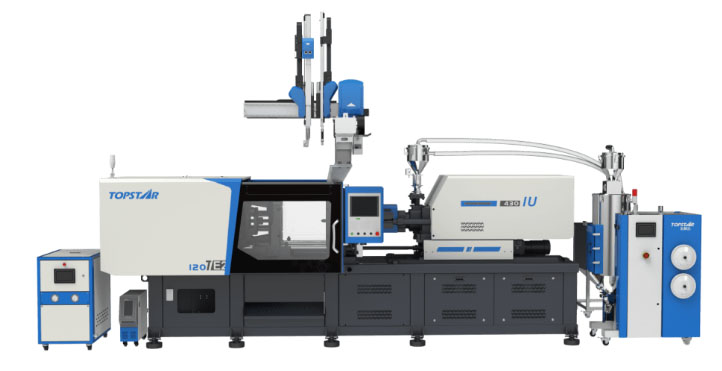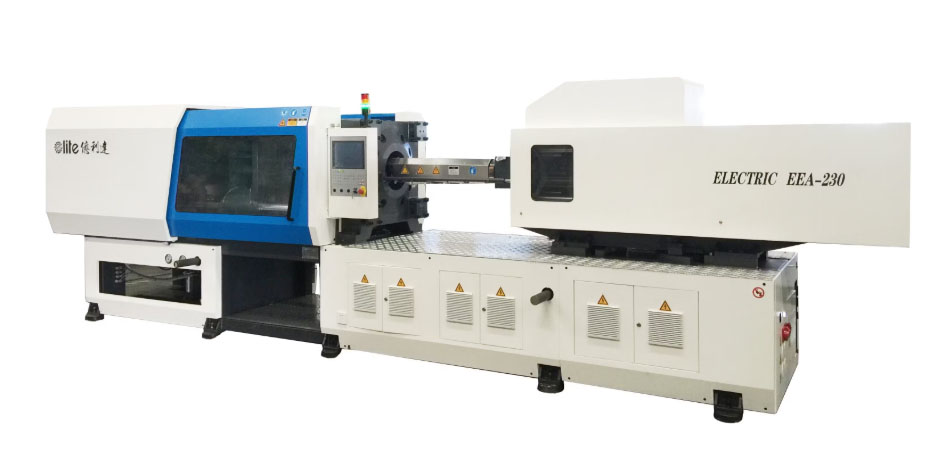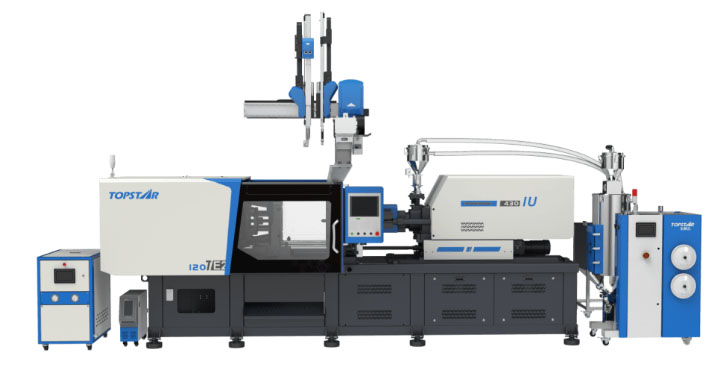
Hydraulic Plastic Injection Molding
Overview:
Developed in the late 1930s, hydraulic injection molding machines (IMMs) were the market standard for decades. They use hydraulic cylinders to clamp molds at high pressure, making them suitable for large, heavy parts.

Advantages:
- High clamping forces (up to 8,000+ tons), ideal for large parts.
- Better injection rates and ejection capabilities.
- Lower upfront cost compared to electric machines.
- Durable and resistant to wear.
- Easy maintenance with widely available replacement parts.
Disadvantages:
- High energy consumption (double that of electric machines).
- Noisier operation and less precision.
- Risk of oil leaks, unsuitable for cleanrooms.
- Higher cooling times due to elevated operating temperatures.
Best Applications:
Automotive parts (e.g., bumpers) and thick-walled components requiring long hold times.
[elementor-template id=”4330″]
Electric Plastic Injection Molding
Overview:
Introduced in 1984, electric IMMs are driven by digitally controlled servo motors, offering precise and energy-efficient operations. These machines now account for over half of IMM sales in the U.S.

Advantages:
- Energy savings of 30%-70%.
- Precision and repeatability reduce scrap rates.
- Cleaner operation without fluid contamination, ideal for cleanrooms.
- Quieter operation (<70 dB) with faster injection speeds.
- Shorter startup times and cycle times (up to 20% faster).
- Lower operational costs due to reduced material waste and maintenance.
Disadvantages:
- Higher upfront cost compared to hydraulic machines.
- Limited clamping forces for larger parts.
- Wear items like ball screws and toggle clamps are expensive to replace.
- Less forgiving for applications requiring flexibility.
Best Applications:
Small to medium parts, medical products (e.g., syringes, Petri dishes), and high-precision applications.
[elementor-template id=”4331″]
Hybrid Plastic Injection Molding
Overview:
Hybrid IMMs combine the clamping force of hydraulic machines with the precision and efficiency of electric machines. These versatile machines are gaining popularity for thin- and thick-walled parts.

Advantages:
- Energy-efficient screw recovery reduces power consumption.
- Combines high force (hydraulic) with precision and energy savings (electric).
- Faster response times with continuous servo pump adjustments.
- Lower temperatures prolong oil and machine life.
- Median upfront cost with long-term ROI benefits.
Disadvantages:
- Maintenance requires knowledge of both hydraulic and electric systems.
- Matching the right hybrid press to specific applications can be complex.
Best Applications:
Versatile for both thin- and thick-walled parts and industries requiring energy efficiency with high clamping force.
Conclusion
- Choose Hydraulic Machines for heavy-duty applications requiring extreme clamping force and cost efficiency.
- Choose Electric Machines for precision, energy savings, and cleanroom suitability.
- Choose Hybrid Machines for a balance of force, efficiency, and versatility with long-term cost savings.
Understanding the strengths and weaknesses of each method ensures the right choice for your specific injection molding needs. Let me know if you’d like more detail on any particular process!
 DTG Mould Trade Process |
|
| Quote: | According to sample, drawing and specific requirement. |
|---|---|
| Discussion | Mold material, cavity number, price, runner, payment, etc. |
| S/C Signature | Approval for all the items. |
| Advance | Pay 50% by T/T |
| Product Design Checking | We check the product design. If some position is not perfect, or can not be done on the mould, we will send customer the report. |
| Mold Processing | Send report to customer once each week |
| Mold Testing | Send trial samples and try-out report to customer for confirmation |
| Mold Modification | According to customer’s feedback. |
| Balance Settlement | 50% by T/T after the customer approved the trial sample and mould quality. |
| Delivery | Delivery by sea or air. The forwarder can be designated by your side. |
 |
|

